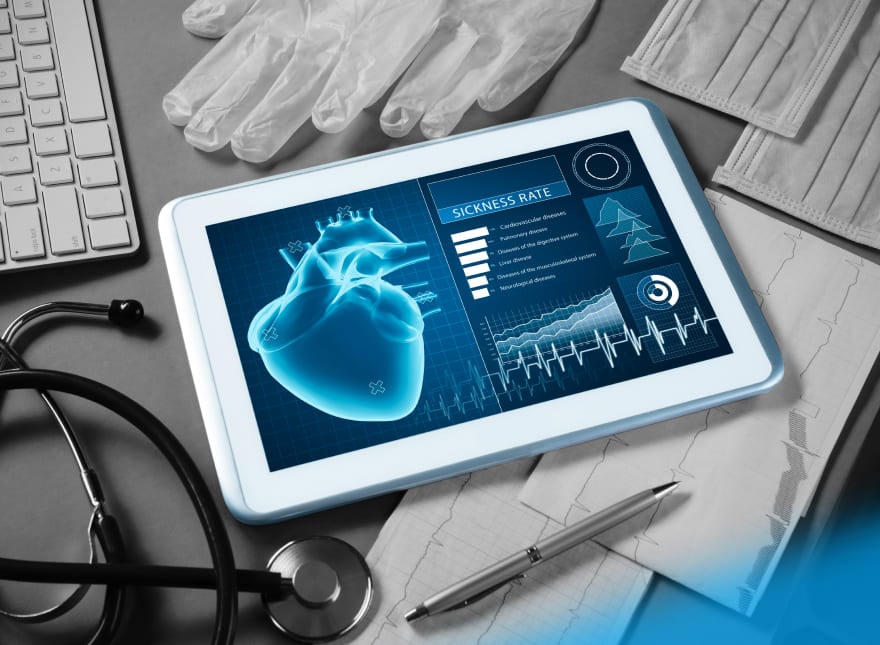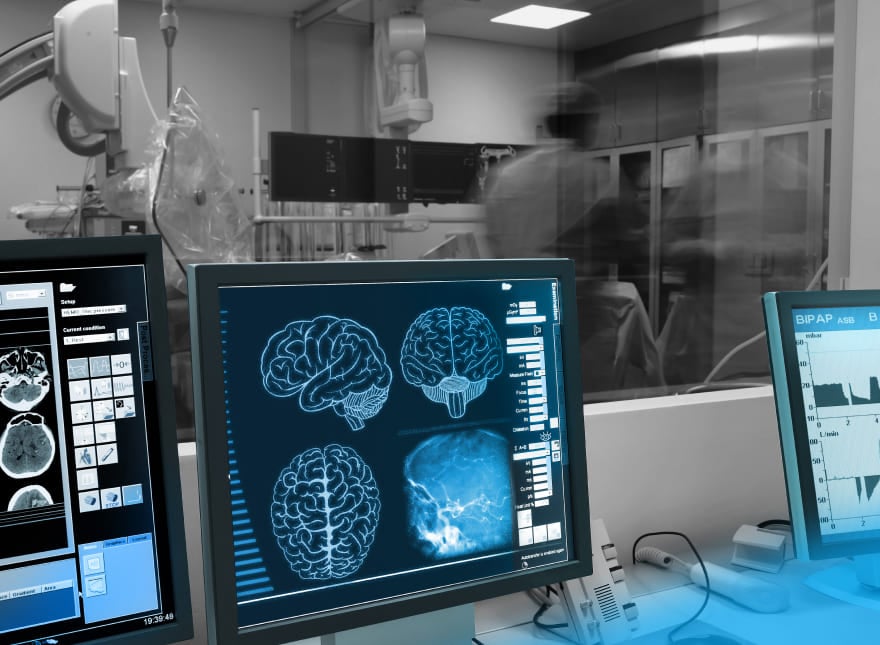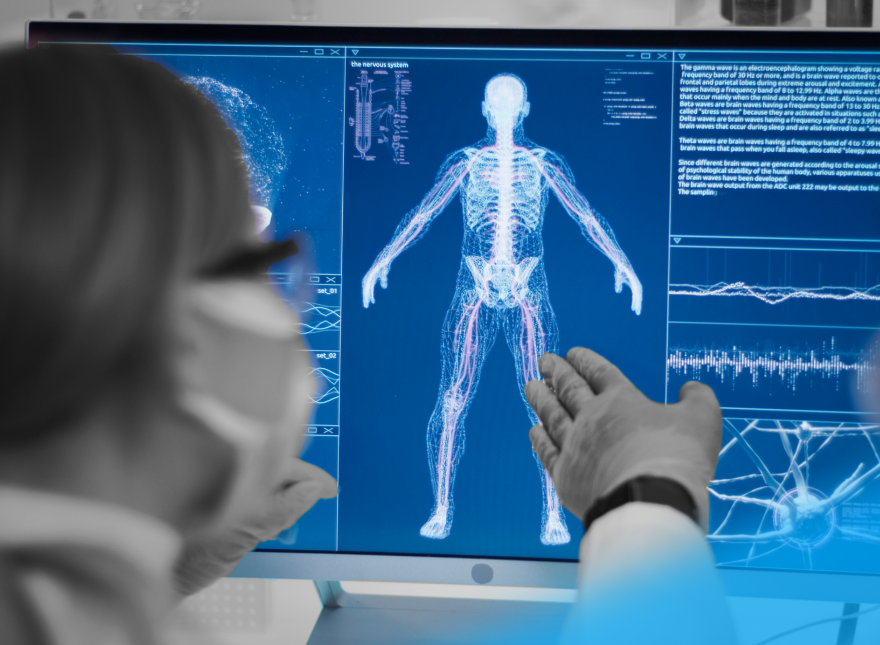Check out our latest blog article: From component to enterprise – modular robotics done right.
Current Trends in Healthcare: From All-Round Telehealth to Smart Pet Care
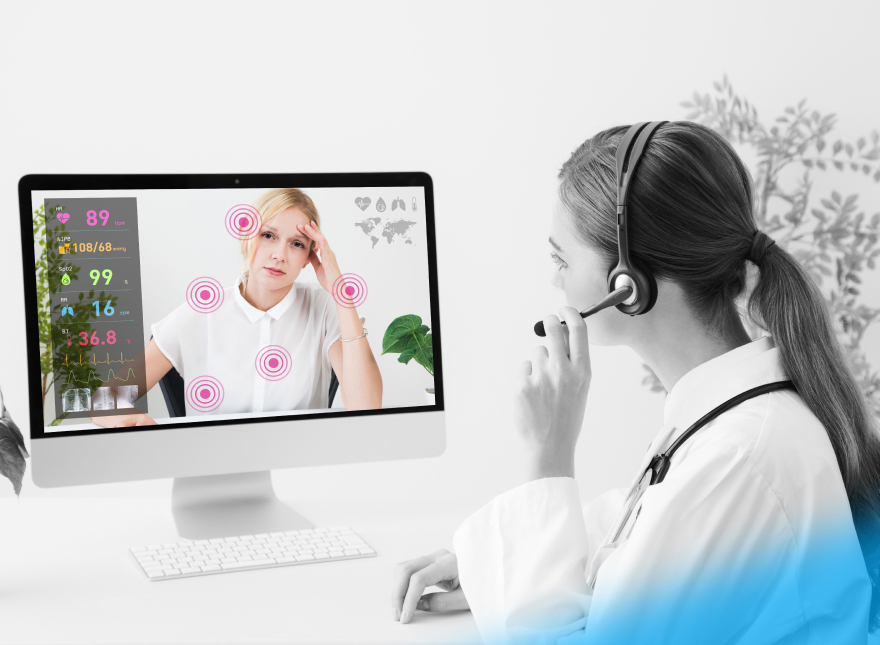
Due to the pandemic, many of us started using smart medical devices or scheduled remote consultations because it was a necessity. Now, we do it because we see how convenient it is. What’s more, many studies show how effective smart tech is for the healthcare industry. So, more hospitals and medical centers are asking for healthcare software solutions to be more competitive, and smarter.
Here's what's transforming the healthcare sector on the tech side:
- The spread of AI and robotics
- All-round connectivity
- Reduction in sizes of hardware components
- Cheaper and more accurate elements
It’s no surprise that the global IoT in the healthcare sector is expected to see a fivefold increase between 2021 and 2028. Let’s have a look at the key healthcare technology trends driving the market in 2022.
Trend 1. Telehealth Solutions
COVID-19 pushed telehealth into the mainstream. What we see now is that virtual consultations have become permanent fixtures in our lives and have evolved from one-on-one video conferencing between doctors and patients—to group sessions.
To support this trend, there is also a big move toward reimbursement for telehealth services that adequately reflects its value. Certain virtual consultations in the US are now offered at the same rate as office visits, and many states have laws that force private insurers to pay for telemedicine services. Cardiac rehab and group psychotherapy are on the list of payable telehealth services for 2022.
Even though some telehealth services that are directly linked to the pandemic may have an expiry date, the spread of smart healthcare solutions is predicted to expand.
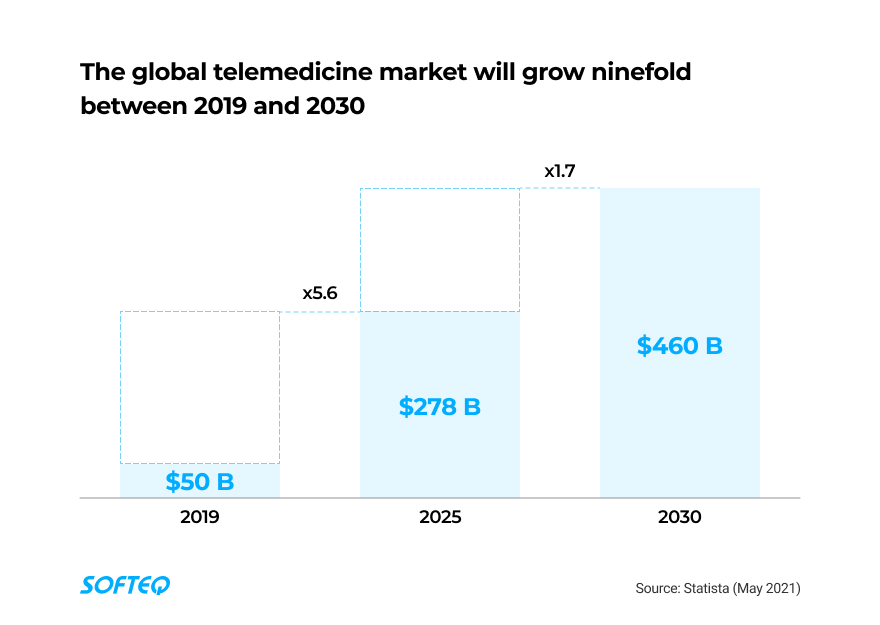
The variety of use cases and areas of application are growing, too. Initially, telehealth was focused on remote rural communities. Today, it can offer a variety of applications for everyone, such as virtual care work for gastroenterology, cardiology, geriatrics, and emerging care. Many solutions continue to help treat non-COVID patients—such as checking in on people with mild symptoms. Some common use cases include:
- Observation of people with chronic diseases like asthma, diabetes, and heart disease. In tandem with medical devices, this helps to track the vitals of patients and share them with doctors
- Post-surgery and post-intensive monitoring to check the status of recovery online
- Telehealth in nursing—remote check-ups
- Physical therapy. Physicians can guide patients during video sessions
- Remote consultations like video chats with psychiatrists. For example, a California-based company, Mindstrong, provides virtual therapy and measures mental health symptoms based on how patients use their smartphones.
By 2022, telehealth solutions have also proved their effectiveness (besides their popularity). Consider telemedicine visits for patients with diabetes. A study showed that remote monitoring can significantly improve glycemic control among them.
Trend 2. Remote Patient Monitoring
COVID-19 has given a boost to RPM solutions and their popularity continues to rise. Prior to the pandemic, healthcare IoT mainly targeted seniors to help them stay safe and to alert caregivers in emergency cases. In 2022, a variety of patients monitor their vital signs at home. Today, one-third of consumers will choose providers that allow them to share data from connected health devices.
RPM solutions also became popular thanks to a wider spread of consumer gadgets. These include wearables, smart home devices, and multifaceted healthcare gadgets.
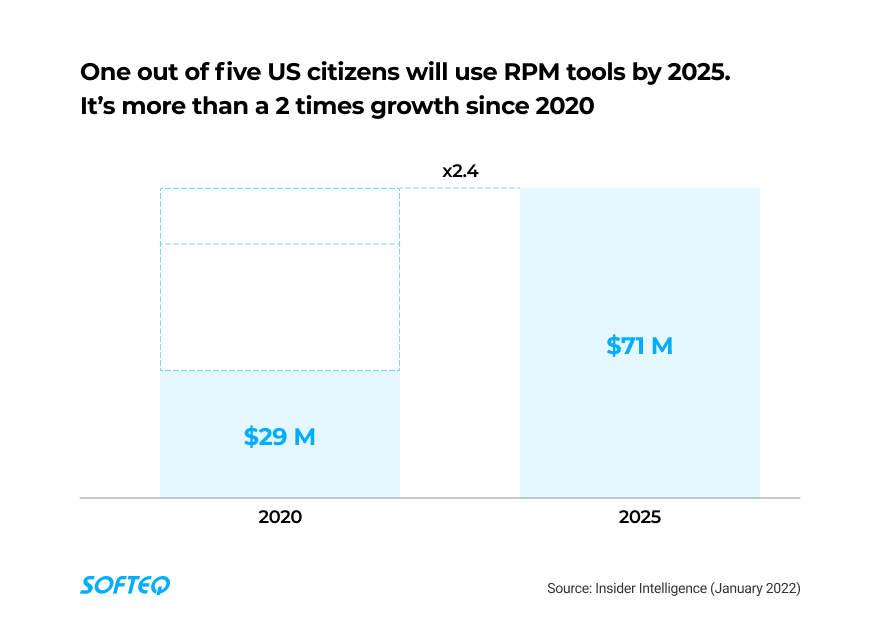
Today, RPM systems differ in shape, purpose, and features. Common examples of devices include:
- Vital signs monitors. For example, blood pressure cuffs and glucometers collect vitals and send them to physicians. These help doctors watch patients with hypertension or diabetes. Such devices can also improve drug adherence. For instance, a continuous glucose monitor from Dexcom reminds diabetes patients to take their insulin
- Telecare solutions. For example, wireless nurse call systems or wearables can help nurses to monitor recovery and check elderly patients
- Smart drug delivery devices. These vary by route of administration—oral, inhalable, or injectable. For example, smart pill bottles, smart inhalers, smart injectors, or smart packaging systems.
- Smart watches, wearable patches, and voice apps. For example, Vital Scout, a patch worn on the chest, features ECG sensors to measure stress and recovery rates. When connected, such in-home devices can send data to the hospital EHR. Synced applications let caregivers and medical staff guide care and see the tracking history.
Besides these well-known devices, the pandemic also pushed companies to create new types of portable health gadgets. Masks, for example, are one of the main healthcare trends. A new must-have has become both a fashion accessory and a functionally rich wearable. So, Razor created a smart mask that features voice-amp technology. Their MaskFone has a built-in microphone and Bluetooth-enabled earbuds.
Trend 3. Smart Pet Care
Two-thirds of US households have pets and invest in their wellbeing. The pandemic increased this number—we’ve seen a puppy boom. This, in turn, resulted in a new wave of pet-friendly gadgets—smart collars, smart feeders, and dog-activated video calls. Predictably, this has led to a new trend in pet healthcare—a boost in televet services.
In particular, after the lockdown, pet parents asked for services to deal with separation anxiety. According to Rover, an online marketplace for pet care, demand for training and anxiety solutions is 10 times higher than at pre-pandemic levels.
The most popular veterinary telemedicine solutions today include:
- Online consultations. Pet care providers can examine pets via images and videos. For example, whiskerDocs is a virtual vet care service that works 24 hours a day via chat, phone, and email
- Smart medical record organizers. Such apps keep pet information in one place. These include health records, prescriptions, medication trackers, and vaccination logs
- Preventive care services. These come in a form of video calls, online chats, or email consultations. Some apps allow the automatic refilling of prescriptions
Virtual vet care is one of the healthcare trends that depends on regulations. For pandemic times, the FDA updated its guidance on telehealth use. Vets have become free from some previous requirements and can now prescribe drugs to their patients without face-to-face visits. Hopefully, it’ll be a green light for more convenient pet care. Today, we expect to see that televet services will expand.
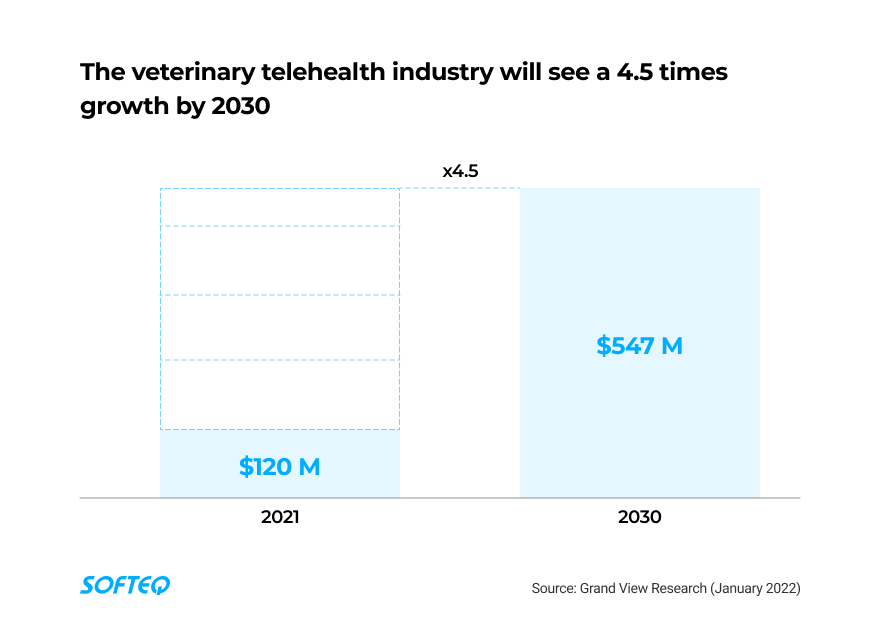
Trend 4. Medical 3D Printing
Let’s talk about 3D printing as one of the emerging healthcare industry trends. This market experienced negative effects from the pandemic but overcame them. Logistics and investments resumed, and today, 3D printing has optimistic estimates on its value to healthcare in the upcoming years.
“Perspectives are growing align with the market size. By 2030, we can see a 5.6 times increase in the size of 3D printing in the healthcare market. It’ll hit $5,85 billion (up from $1,04 billion in 2020).”
Allied Market Research
What first comes to mind when we talk about 3D printing in healthcare are artificial implants. They are in high demand because of a shortage of organs worldwide. In the US, for example, there are more than 106,000 people on the national transplant waiting list. With 3D printing, companies get a chance to reproduce the required molds and implants faster than with traditional mass manufacturing methods, or if waiting for donated organs.
There are also more sophisticated 3D models. Teams of researchers are working on bio-printed kidneys and full sized human heart models. This process isn’t fast and is more complicated than traditional 3D printing. For bioprinting, techies have to reproduce living tissues like skin, blood vessels, or bones and make them function. It may take dozens of years before we’ll see complex organs printed in this way. In the meantime, 3D bioprinting already helps to generate model tissues for research.
Also, 3D printing is used in orthopedics, radiology, and oncology. The technology makes it possible to print medications. The expanding market of 3D printing offers a variety of other use cases, namely:
- Prostheses with customized replacement parts. Making it possible to create bionic devices that reproduce the motions of a human leg or arm
- Solutions for dental purposes. These include dentures, aligners, and bridge models
- Prototypes of medical devices. 3D printing helps create accurate prototypes of future tools and so speeds up the design process
- Anatomical models. Can be used as materials for training—for instance, to help doctors prepare for surgeries
- 3D-printed pills. Such pills come with a precise dose of medication.
Trend 5. All-round AI-predicting
AI is gaining momentum across the healthcare industry. It makes medical services more accessible, ensures faster diagnosis, and enhances patient experience. According to the Harvard Business Review, the technology will prevail in 90% of hospitals in the next few years. By 2029, the value of AI will have increased tenfold, while the market size will hit 67.4 billion, according to MarketsAndMarkets.
Here’re the key factors driving the adoption of AI in healthcare:
- A growing number of large and complex healthcare datasets. Healthcare organizations want to be able to process and analyze them fast
- Improvements in computing power and the decreasing cost of hardware components
- Greater role of AI in imaging and diagnostics. It has the capability to reduce errors and help defend against COVID-19
- Rise in potential AI-based tools for smart elderly care
- An increasing number of collaborations between healthcare providers. Data interoperability here is a must
In current use cases, AI brings smart capabilities to most diagnostics. It enhances medical imaging like cancer screening and chest CT exams. In particular, AI reduces the amount of radiation exposure from CT scans and improves the reconstruction of images. It shortens the time a patient needs to spend inside the magnet, which makes it a more comfortable experience. For both physicians and their patients, it results in faster diagnoses and reduced errors.
AI helps fight against the spread of COVID-19. There are AI-driven screening devices that detect people with fever, and cameras that recognize faces with masks. AI is here to help immunologists create vaccines. In particular, machine learning tools can find immunogenic components of the virus that would make good vaccine candidates.
Today, the top AI app areas in healthcare with great potential for future growth are:
- Robotic surgery
- Virtual nursing assistants
- Administrative workflow
- Fraud detection
- Dosage error reduction
Bottom Line
When it comes to current trends in healthcare, there are many forces at play. Lockdowns disrupted access to medical services but brought a surge in technological solutions. These include AI, 5G, edge computing, wearable technology, robots, new chips, and more. Going forward, you may need a trusted consultant to help implement these multiple technologies and stay competitive. For this reason, Softeq is here to help you make the adoption process smooth, effective, and affordable.
More articles on the topic



